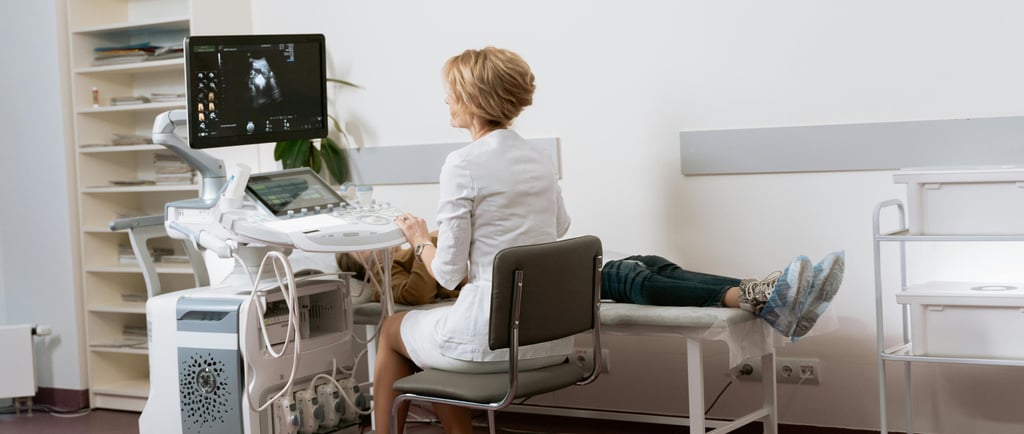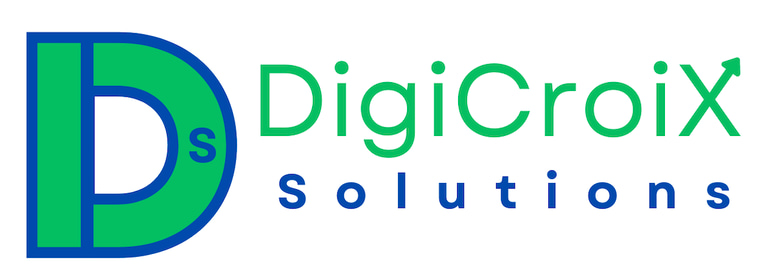Clinic Advertising vs Digital Marketing in Hospitals
Compare clinic advertising with broader digital marketing in hospital strategies to decide what suits your facility best. We show pros and cons and mixed tactics. Book a strategy call to create your blended approach.
Vishwa Raval
9/30/20259 min read


Introduction to Clinic Advertising and Digital Marketing
In the rapidly evolving healthcare environment, clinic advertising and digital marketing are indispensable components of a hospital’s strategy to engage patients and enhance growth. Clinic advertising encompasses traditional marketing methods designed to promote healthcare facilities and services through channels such as print ads, TV commercials, and outdoor signage. The primary objective of clinic advertising is to create visibility and awareness among prospective patients, thus drawing them to the medical facility's services.
On the other hand, digital marketing leverages online platforms such as social media, websites, and search engines to target potential patients effectively. This approach allows hospitals to engage with their audiences through tailored content, search engine optimization (SEO), and targeted advertising. The core aim of digital marketing in healthcare is not only to reach a wider audience but also to foster meaningful interactions between patients and providers, improving patient engagement in the process.
Understanding both clinic advertising and digital marketing is essential for hospitals navigating the competitive landscape of healthcare. With a plethora of healthcare options available, hospitals must be strategic in how they present their services to attract and retain patients. While traditional clinic advertising can bolster visibility in local communities, digital marketing offers a comprehensive approach that reaches patients where they spend a significant portion of their time—online.
As healthcare facilities consider their advertising strategies, it is crucial to recognize how integrating clinic advertising with digital marketing initiatives can create a balanced approach. This amalgamation not only enhances awareness but also increases patient engagement, ultimately contributing to the facility's growth and success in an increasingly competitive market.
The Unique Aspects of Clinic Advertising
Clinic advertising plays a significant role in promoting healthcare services at a local level through traditional methods that have stood the test of time. These methods typically encompass print media, such as brochures, newspapers, and flyers, as well as outdoor advertising, including billboards, bus stop ads, and signage. Additionally, community events serve as an essential platform for clinics to engage with their target audience directly. Through these traditional strategies, clinics can foster a strong local presence, which is often vital in the healthcare sector, where trust and familiarity can significantly influence patient decisions.
One of the primary advantages of clinic advertising is its ability to build a local reputation. By strategically placing advertisements in areas frequented by potential patients, clinics can create brand awareness and establish themselves as a trusted healthcare provider within the community. For instance, a local clinic that sponsors a health fair can demonstrate its commitment to community wellness while directly interacting with local residents, thereby enhancing patient trust and loyalty. Moreover, community-oriented advertising helps clinics highlight personalized services tailored to meet the specific needs of their neighborhood, further solidifying their position as an indispensable local resource.
However, while clinic advertising excels in creating local awareness, it does possess limitations in terms of audience reach. Unlike digital marketing, which can broadcast messages across vast geographical areas and demographics, traditional clinic advertising may restrict outreach to those who encounter the ads in their immediate vicinity. This reality can pose challenges, particularly for clinics looking to attract a broader patient base or promote specialized services. Despite these challenges, there are numerous examples of successful clinic advertising initiatives that illustrate the effectiveness of these traditional methods. For instance, a dental clinic that utilized local newspaper ads to run a promotion on family dentistry saw a significant increase in appointments, demonstrating that when executed effectively, clinic advertising can yield substantial returns on investment.
Exploring Digital Marketing for Hospitals
Digital marketing has emerged as a fundamental avenue for hospitals aiming to improve their outreach and engagement with patients. As more individuals turn to online platforms for information regarding healthcare, adopting effective digital marketing strategies becomes essential. Hospitals can leverage various tactics, including social media marketing, search engine optimization (SEO), content marketing, and email campaigns.
Social media marketing allows hospitals to interact with the community on platforms such as Facebook, Twitter, and Instagram. By sharing informative content, engaging with followers, and promoting services, hospitals can create a vibrant online presence. This approach not only fosters community trust but also cultivates a loyal patient base. Additionally, SEO plays a crucial role in ensuring hospital websites rank high in search engine results. By optimizing website content with relevant keywords, hospitals can increase their visibility to potential patients actively searching for healthcare services.
Content marketing further enhances a hospital's digital marketing efforts by providing valuable information, such as blog articles, videos, and infographics. This type of content establishes the hospital as a thought leader while also addressing common healthcare concerns among patients. Email campaigns can be utilized as a direct communication line, allowing hospitals to send out newsletters, appointment reminders, and health tips to their subscriber lists.
However, implementing digital marketing strategies may present challenges for hospitals, such as fierce competition within the healthcare sector and the necessity for continuous content creation. With many organizations vying for the same audience, hospitals must ensure their marketing efforts are distinct and engaging. Furthermore, maintaining an active online presence requires dedication and resources, posing another layer of complexity.
Despite these challenges, the benefits of digital marketing for hospitals—such as wider reach, targeted campaigns, and measurable results—make it a worthwhile investment. By striking the right balance between traditional advertising and innovative digital marketing efforts, hospitals can enhance their visibility and effectively connect with their communities.
Comparing Clinic Advertising and Digital Marketing
Clinic advertising and digital marketing are two essential strategies for healthcare institutions aiming to enhance their visibility and patient engagement. While both approaches share the common goal of attracting patients, they employ different methods and reach audiences in distinct ways. Understanding the nuances of each can help healthcare providers develop a well-rounded strategy that leverages the strengths of both.
In terms of audience reach, traditional clinic advertising, which includes methods such as newspapers, billboards, and direct mail, can effectively target local populations. Its geographical focus is beneficial for practices looking to attract nearby patients. However, its effectiveness can be limited by declining engagement levels and a lack of measurable results. Alternatively, digital marketing provides a broader reach, potentially attracting patients from varying locations through online channels such as social media, search engines, and email. With the rise of telemedicine, digital presence becomes even more crucial in reaching patients who may not physically visit a clinic.
Cost-effectiveness is another significant factor in evaluating these two strategies. Traditional advertising often involves substantial upfront costs without guarantees of success, making it a less risk-averse choice. In contrast, digital marketing often allows for lower initial expenditures and more precise budgeting. Moreover, employing social media advertising, search engine optimization, or pay-per-click campaigns can yield measurable returns on investment (ROI) through analytics and tracking tools, providing insights into patient engagement patterns and preferences.
Additionally, adaptability plays a crucial role in the effectiveness of both methods. Clinic advertising often requires longer lead times and adjustments based on the effectiveness of particular campaigns, whereas digital marketing can be rapidly adjusted in response to real-time performance metrics. This flexibility allows healthcare providers to tailor their messaging and offerings in alignment with evolving patient needs.
In conclusion, while clinic advertising and digital marketing have distinct advantages and limitations, a synergistic approach can maximize patient outreach and engagement. By intelligently combining traditional methods with innovative digital strategies, healthcare institutions can create a holistic marketing strategy that effectively meets the needs of their target audience. Metrics and data-driven decision-making are vital to navigate this complex landscape successfully.
Strategies for Blending Clinic Advertising and Digital Marketing
As hospitals strive to optimize patient outreach, integrating clinic advertising with digital marketing strategies can yield significant benefits. Effective integration requires a multifaceted approach that leverages both local advertising techniques and online platforms to reach a broader audience.
One actionable strategy involves utilizing digital platforms to promote community-focused events, such as health fairs or free screening days. By advertising these initiatives through social media channels, hospitals can enhance visibility and attract local residents seeking preventive care. Furthermore, integrating email marketing campaigns with detailed information about these events can stimulate attendance and foster community engagement.
Another effective tactic is optimizing the hospital’s website for local search engine optimization (SEO). By incorporating location-specific keywords and phrases, healthcare facilities can increase their visibility in search engine results for individuals seeking medical services within their vicinity. This approach not only drives more traffic to the website but also reinforces the hospital's presence in the local community.
Employing social media advertisements targeting specific demographic groups in the local area is another strategy. Advertisements can be crafted to address the unique healthcare needs of the community, such as promoting preventative care services or wellness programs tailored to common health concerns in the region. This type of targeted outreach can generate interest and result in higher engagement rates.
Moreover, collaborating with local businesses and organizations can amplify clinic advertising efforts. By co-hosting or sponsoring health-related events, hospitals can benefit from cross-promotion, thereby enhancing their reach and credibility. Online coverage of such partnerships through press releases, blog posts, and social media can further enhance awareness of the hospital’s services.
In conclusion, blending clinic advertising with digital marketing requires thoughtful strategies that focus on community engagement and local outreach. By utilizing digital tools to promote local initiatives and building a strong online presence, hospitals can effectively connect with potential patients and improve overall health outcomes in their communities.
Case Studies: Successful Blended Approaches
The landscape of healthcare marketing has evolved significantly, requiring hospitals to develop integrated strategies that merge clinic advertising and digital marketing effectively. A notable example of this approach can be seen in City Hospital, which embarked on a dual strategy to enhance patient engagement. The hospital invested in traditional clinic advertising such as billboards and local flyers while simultaneously launching a robust digital marketing campaign that included social media engagement and an informative blog. The challenges they faced included balancing the reach of traditional advertising with the immediate data analytics capabilities of digital marketing, yet they managed to increase patient appointments by 30% within six months.
Another exemplary case is Greenfield Medical Center, which encountered the challenge of reaching a diverse demographic. Their solution involved a blended strategy, where they utilized clinic advertising to target local communities through health fairs and informational seminars while concurrently enhancing their online presence through search engine optimization (SEO) and pay-per-click (PPC) campaigns. This multifaceted solution resulted in a 40% increase in online appointment bookings, demonstrating the power of adapting marketing strategies to suit specific audience needs and preferences.
In a different scenario, Oceanview Hospital successfully combined outreach through clinic advertising in high-traffic areas with a focused digital marketing approach that leveraged email campaigns and targeted Facebook ads. This method proved particularly effective during flu season, where their advertising efforts promoted vaccination drives. Through careful monitoring of campaign performance, they were able to refine their approach and see a 25% rise in vaccination appointments compared to previous years.
These case studies illustrate that successfully blending clinic advertising with digital marketing requires flexibility, a keen understanding of target audiences, and a commitment to ongoing evaluation and adaptation. By learning from real-life implementations, hospitals can navigate their unique challenges and achieve better outcomes, ensuring they meet the evolving demands of patient care and engagement.
Conclusion: Choosing the Right Approach for Your Facility
In the dynamic landscape of healthcare marketing, the choice between clinic advertising and digital marketing is pivotal for hospitals aiming to enhance their visibility and engagement with potential patients. Throughout this discussion, we have highlighted the distinct advantages of each approach, emphasizing that a tailored strategy is essential for meeting a facility's unique objectives and catering to its target demographics.
Clinic advertising is a powerful tool that can generate immediate local awareness through traditional channels, such as print media, radio, and community events. It offers a more personal touch, often resonating well within specific geographic areas where hospitals serve. Conversely, digital marketing harnesses the immense reach of the internet, enabling healthcare facilities to engage diverse audiences through social media, search engine optimization, and targeted online ads. This technique allows hospitals to convey detailed information about their services and patient care initiatives, fostering stronger connections with potential patients.
As we have seen, the key to success lies in finding the right balance between these two approaches. Each facility must consider its own circumstances, including target audience, market competition, and budget constraints, to determine what combination of clinic advertising and digital marketing will yield the best results. By synergizing the immediacy of traditional advertising with the expansive capabilities of digital platforms, hospitals can craft a comprehensive marketing strategy that aligns with their vision and organizational goals.
Ultimately, the decision to merge these marketing tactics should not be made lightly. We encourage healthcare leaders and marketing professionals to undertake a thorough evaluation of their current practices and consider scheduling a strategy call to outline a comprehensive marketing plan. It is through careful analysis and strategic planning that hospitals can effectively navigate the complexities of modern healthcare marketing and position themselves for success.
Get in Touch
Book your free consultation today and let's create a strategy to elevate your success!


Address
94 Shree Nagar Apartment, Sola Road, Naranpura, Ahmedabad, Gujarat, India 380063
6706 Fulton Avenue, Burnaby, BC, Canada V5E 3H1
Phone
+91 88497 12474
Quick Links
© 2025. All rights reserved.
Useful Links
Engagement
Subscribe
+91 88497 12474
